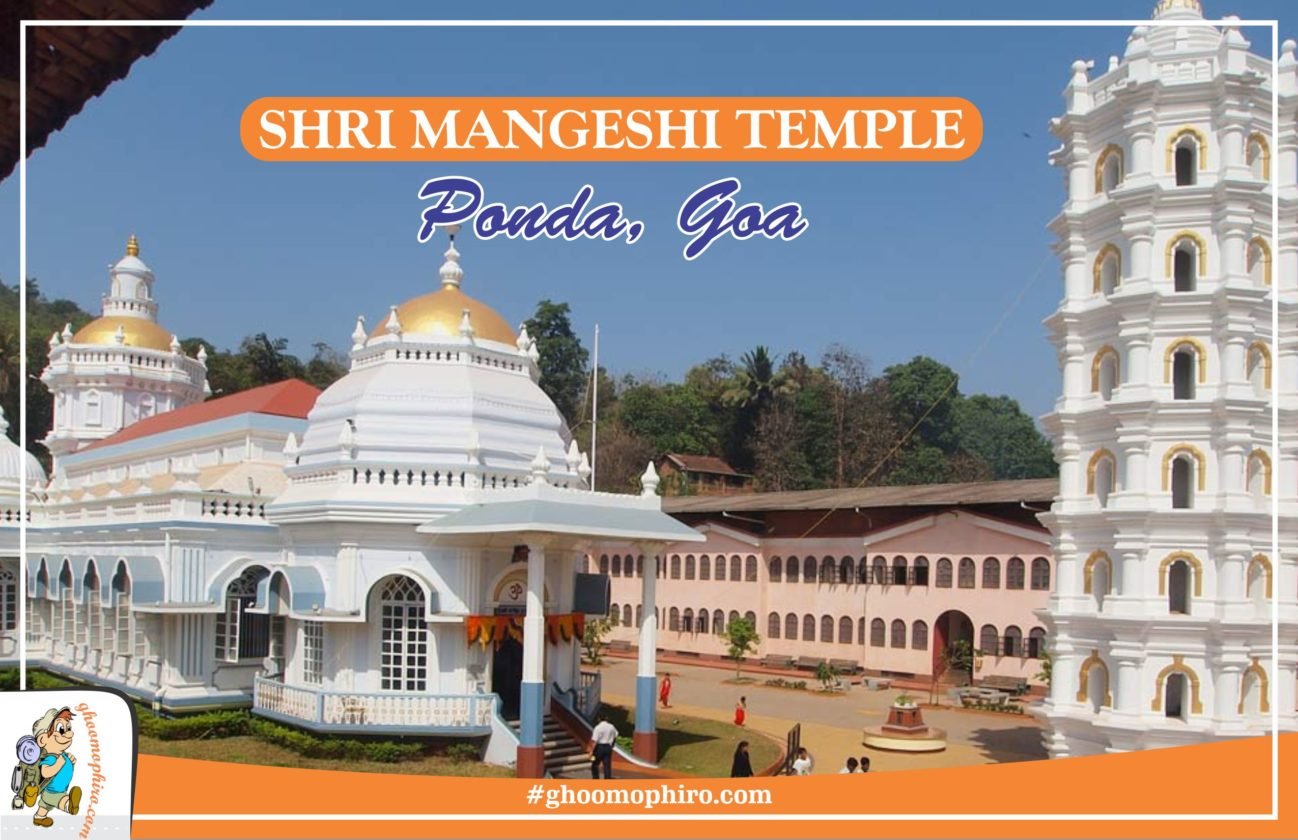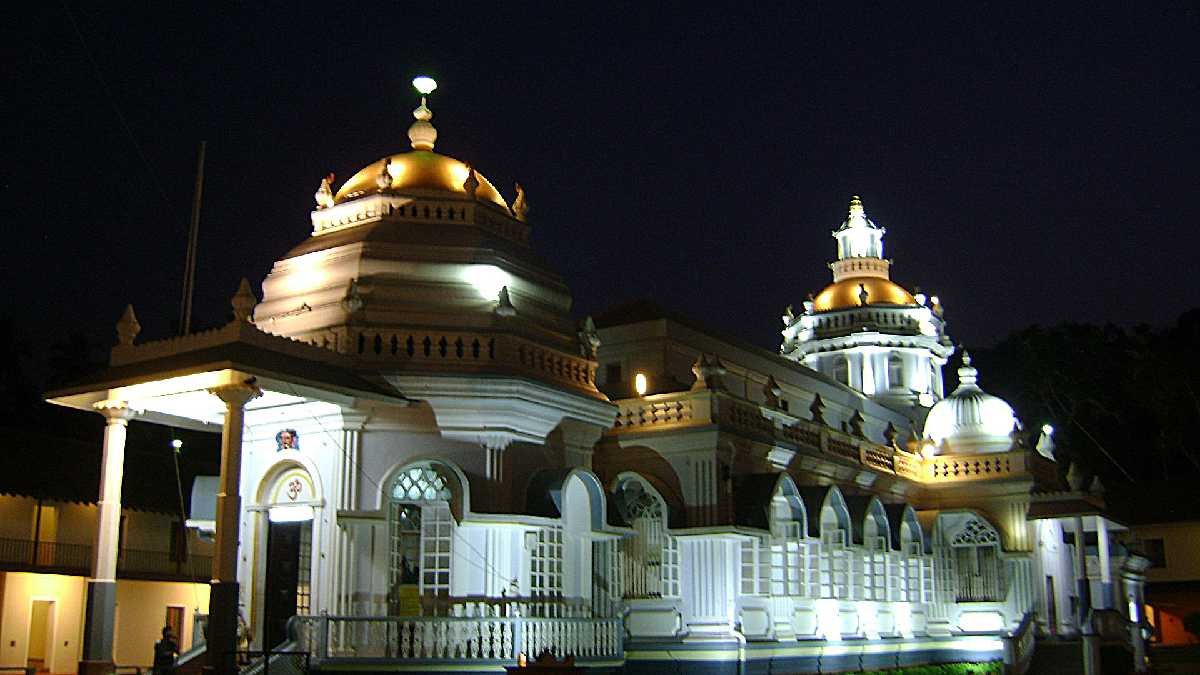Mangueshi Temple and its Magnifciency
Posted on June 30, 2019 by Ghoomophiro

Shri Manghesi (or Mangueshi or Mangesh) temple is one of Goa’s biggest, most visited and most important temples in the state. it is located in Mangueshi village in Priol, Linda taluk of Goa and is dedicated to Hindu god Lord Shiva. It is a temple of great spiritual importance to Hindus. Today, Ghoomophiro will tell you all you need to know about it.
How to reach?
The Mangueshi temple is located at a distance of mere 21 kilometers from the capital of Goa, Panaji. Like with most other spots in Goa, the best way to commute locally is two-wheeler through other means are easily available.
Best time to visit
All temples have their festivals for which they hold special prayers and celebrations. The best time to visit Mangheushi temple too would be on the day of a festival that has special celebrations in the temple. Special celebrations are held in this temple are held on the occasion of a lot of festivals like Rama Navami, Akshaya Tritiya, Anant Vritotsava, Navaratri, Dussehra, Diwali, Magha Poornima Festival (Jatrotsav), Mahashivratri, etc. We recommend that you plan your trip accordingly.
If that is not possible, we highly recommend visiting it on a Monday evening when the idol of Mangeush (the chief diety) is taken out for a procession in the Palakhi accompanied by music before the evening Aarti.
Dress code
Ever since 2011, as with other temples in the region, the temple has a dress code of its own which is traditional wear.
History of the temple
The main temple at Mangueshi is dedicated to Bhagavan Manguesh, an incarnation of Shiva. He is worshipped here as linga. According to a legend, Shiva had manifested into a tiger to scare his wife Parvati. Paravati, upon being frightened at the sight of the tiger, went in search of Shiva and cried out, “Trahi Mam girisha!” (Oh Lord of Mountains, save me!). Upon hearing these words, Shiva turned himself back to his human form. The words “mam girisha” thus became associated with Shiva and over time they got abbreviated to Manguirisha or Manguesh. Lord Manguesh is the kuldevta (clan god) of many Goud Saraswat Brahmins.
Another mythological legend tells us of origin of the chief idol. It says that Manghesh Linga was consecrated on the mountain of Mangireesh (Mongir) on the banks of river Bhagirathi by Brahma. From there, the Saraswat Brahmins brought it to Trihotrapuri in Bihar. They then carried the linga to Gomantaka and settled it at Mormugao, on the banks of Zuari river present day called Sancoale and established their most sacred temple there.

The less mythological continuation of history states that the Mangeushi temple this had its origins in Kushasthali Cortalim, a village in Murmugao. The village fell to the invading Portuguese in 1543. In the year 1560, when the Portuguese government started converting people into Christianity in Mormugao taluka, the Saraswats of Kaundinya Gotra and Vatsa Gotra moved the Mangesh Linga from the original site at the Kushasthali or Cortalim on the banks of river Aghanashini (Zuari)(Sancoale) to its present location at Mangeshi in Priol village of Atrunja Taluka, which was at that time still under the rule of Hindu kings of Sonde of Antruz Mahal (Ponda), to be more secure. In fact, a lot of temples in Pond have a similar history.

The original site was a very simple structure, and the current structure was only built under Maratha rule, some 150 years after the linga had been moved. In 1739, the Peshwas, who then ruled the region, donated the village of Mangeshi to the temple on the suggestion of their Sardar, Shri Ramchandra Malhar Sukhtankar, who was a staunch follower of Shri Mangesh.
Our visit to the temple
The 450-year-old temple stands on a hill and could be seen from far as we approached it. Its simple structure has an innocent elegance to it. There were several domes, pilasters, and balustrades.
We were attracted to three prominent pieces of architecture. First, there was a prominent Nandi Bull – but then a Nandi Bull idol is something common to all temples of Lord Shiva.
Second, and this was perhaps the best part there was a beautiful seven-story deepstambha (literally ‘lamp tower’), which stands inside the temple complex which was used to light the lamps at the temple.

Third, the temple also has a magnificent water tank, which according to locals is the oldest part of the temple.
The Sabha Greha of the meeting hall is a really large one and has the capacity to hold up to 500 people.
Besides the idol of chief deity, the main complex has idols of other members of Lord Shiva’s family – Goddess Parvati and God Ganesha. The other deities in the temple include Nandikeshvar, Gajana, Bhagavati and the Gramapurusha Deva Sharma of the Kaudanya gotra.
There are also several important subsidiary shrines to the rear of the main building which shrines gods like Mulakeshwsar, Virabhadra, Saanteri, Lakshminarayana, Suryanarayan, Garuda and Kala Bhairav. One thing you would not want to miss the night view.

Conclusion
Goa’s temples continue to get ignored by the tourists to the state because of pull they feel for the state’s most exotic pleasures. Manghueshi temple is one of those temples that suffer most from this ignorance as it is really a temple worth visiting both for spiritual and aesthetic reasons. We hope you will consider visiting it on your next trip to Goa. J




